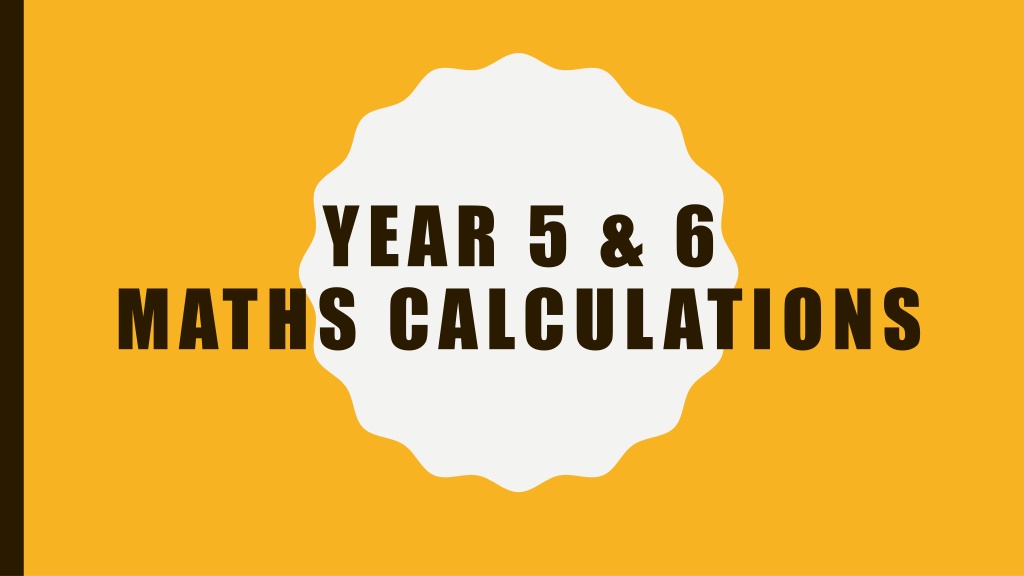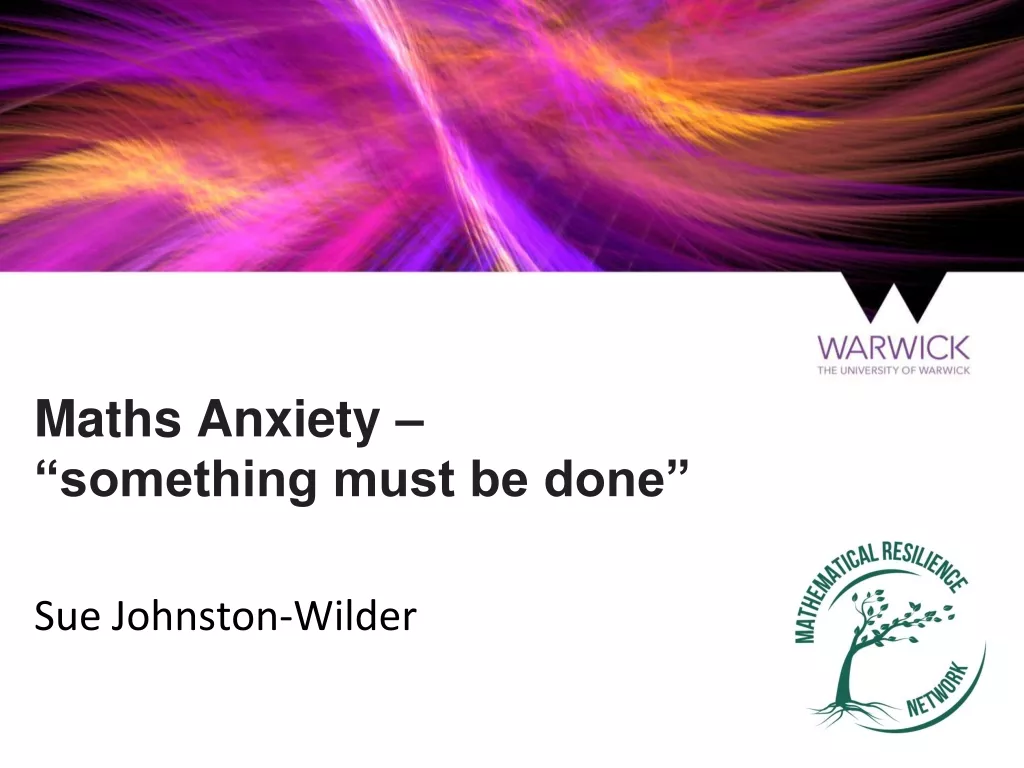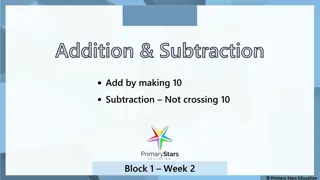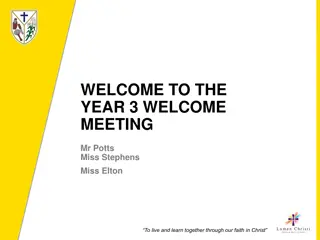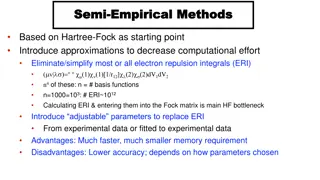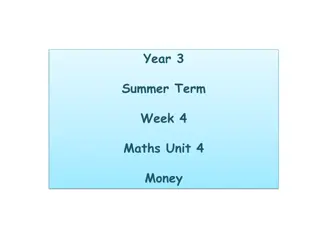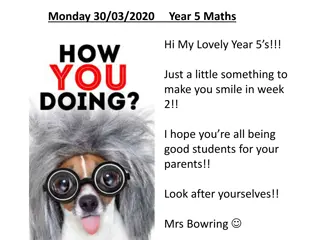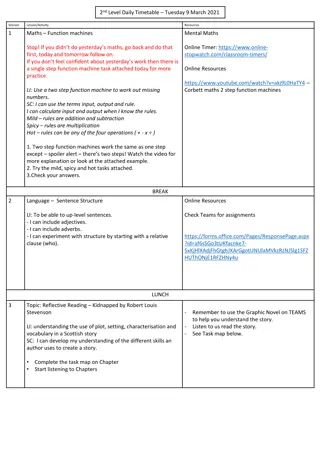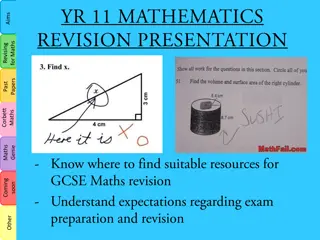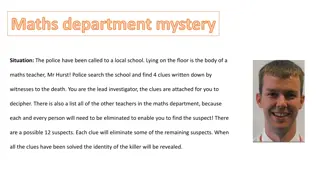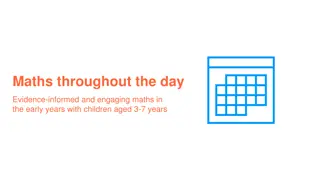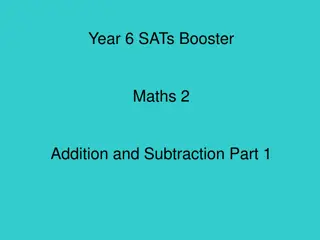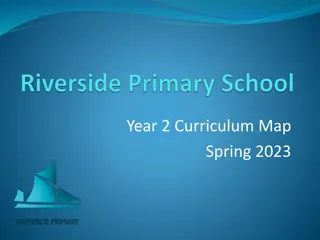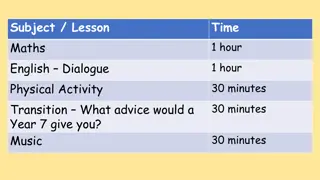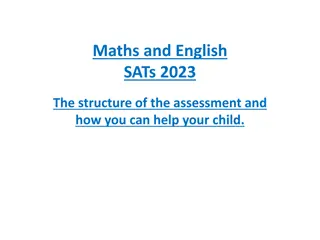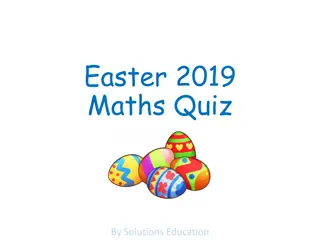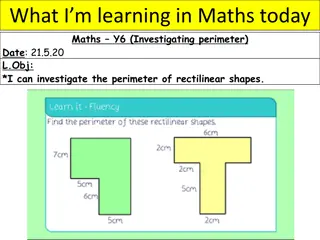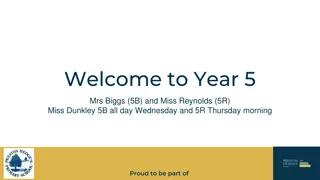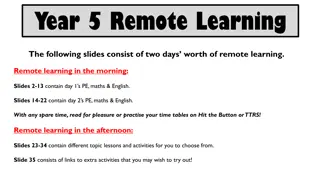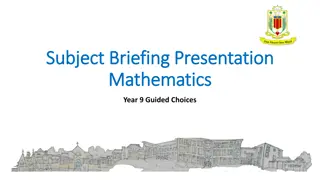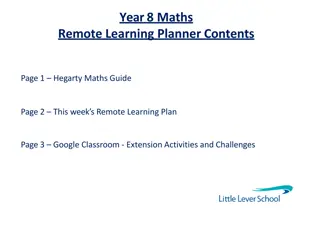Key Calculations and Methods in Year 5 & 6 Maths
Explore the four key calculations emphasized in Year 5 & 6 math - addition, subtraction, multiplication, and division. Understanding the importance of vocabulary, mastering timestables, and achieving year-end expectations for addition and subtraction methods. Dive into strategies to enhance children's mathematical skills and progress.
Download Presentation

Please find below an Image/Link to download the presentation.
The content on the website is provided AS IS for your information and personal use only. It may not be sold, licensed, or shared on other websites without obtaining consent from the author. Download presentation by click this link. If you encounter any issues during the download, it is possible that the publisher has removed the file from their server.
E N D
Presentation Transcript
YEAR 5 & 6 MATHS CALCULATIONS
FOUR KEY CALCULATIONS Four calculations which children focus on throughout their school life. They are addition, subtraction, multiplication and division. For each of these calculations, there are specific methods and strategies which we follow to ensure children are making good progress. IMPORTANCE OF VOCABULARY
TIMESTABLES Timestables are key to all areas of Maths and as your children get older they can apply these to other topics including shape, area and other areas. By end of Year 3/4, children should know all their timestables up to 12x12 including division facts. By Year 5/6 making links across different timestables and apply with accuracy.
ADDITION Vocabulary is really important for addition and we try to get the children familiar with the different terms that relate- altogether, add, increase, sum, total. Children at this point, need to use their number facts (number bonds) but also their secure place value knowledge. Particularly with the arithmetic side, children will need to have quick rapid recall of addition facts. For example questions like this can be done mentally but children need to make links.
ADDITION End of Year 6 expectation: written method for addition of numbers with more than four digits up to ten million; 2 or more integers, decimals with 2dp e.g. 29.78 + 54.34 Here the children would be expected to place the comma to demonstrate place value skills. So what does this look like? So important to line up the decimal point.
INVERSE OF ADDITION- SUBTRACTION Vocabulary is really important for subtraction and we try to get the children familiar with the different terms that relate. Minus, subtract, take away, find the difference. Children at this point, need to use their number facts (number bonds) but also their secure place value knowledge. Particularly with the arithmetic side, children will need to have quick rapid recall of subtraction facts. For example questions like this can be done mentally but children need to make links.
SUBTRACTION CONTINUED Children look to partition but then realise that when they are trying to subtract from the ones, they are unable to as they don t have enough. From this they then REPARTITION the number. Taking a Ten from the tens column and turning the ones into a two digit number. We then move onto a more compact method. This is where place value is so important and children need to have concept each digit in the number. From this, they can answer questions like this:
MULTIPLICATION SKILLS Year 5 mentally multiply TU x U. Multiply whole numbers and decimals by 10, 100 and 1000. Formal written methods to multiply ThHTU x U, ThHTU x TU, U.t x U Children will always get their questions presented horizontally to support them with partitioning but also to consider whether they can answer the question mentally. Year 6 mentally calculate TU x U, U.t X U. Formal written methods to multiply up to 4 digit by 2 digit and one digit with up to 2 decimal places.
MULTIPLICATION SKILLS Year 5 mentally multiply TU x U. Multiply whole numbers and decimals by 10, 100 and 1000. Formal written methods to multiply ThHTU x U, ThHTU x TU, U.t x U Children will always get their questions presented horizontally to support them with partitioning but also to consider whether they can answer the question mentally. Year 6 mentally calculate TU x U, U.t X U. Formal written methods to multiply up to 4 digit by 2 digit and one digit with up to 2 decimal places. Then they move onto long multiplication Partitioning yet again is key linking back to place value knowledge of 352 is made up of 300, 50 and 2. Show one
DIVISION Again questions will be presented horizontally In Year 4 children would have chunked on a number line. Now in Year 5 & 6 we look to extend that and it gets split into two different approaches to division- short division and long division (Year 6) Short division- Quick method with use of timestables again Long division Bigger numbers and use of timestables as a support. Show one
LETS TRY THE DIVISION METHOD 4568 12
